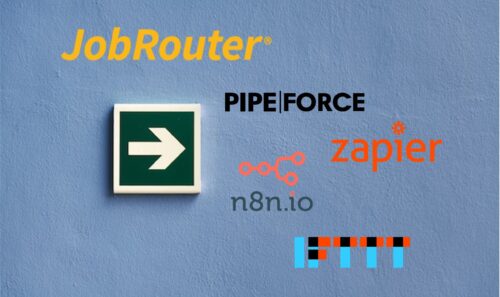
Serverless or PaaS: Differences between approaches
In the race for the fastest and most efficient software development, more and more companies are turning to solutions such as Platform-as-a-Service (PaaS). But an innovative successor is already establishing itself: Serverless. We show what both approaches can do and where the differences lie.
Serverless or PaaS – what’s the difference?
On the surface, the solutions appear similar, but in detail there are huge differences. Let’s start with Platform as a Service (PaaS) and Software as a Service (SaaS): PaaS is a framework that allows developers to build fully customized applications in the cloud with manageable management overhead. This is important for agile companies implementing a DevOps approach to software development. PaaS requires less management overhead, allowing a greater focus on development. PaaS differs from SaaS in that PaaS is equipped to both develop and deliver software over the Internet, while SaaS only enables software delivery.
The benefits of PaaS for enterprises:
- Simple, cost-effective development and deployment
- Easily scalable, highly available
- Low administration and monitoring effort
- More automation, relatively little code
- Easy migration
What is Serverless?
Serverless architecture is the implementation of serverless code for development in the cloud. Like PaaS, serverless architecture represents a framework. Frameworks that are commonly developed with serverless code and used by enterprises include:
- FaaS (Function or Framework as a Service): In the area of prefabricated services, FaaS is to be classified between Software-as-a-Service and Platform-as-a-Service. This allows you to think of FaaS as a readily implemented framework that can be easily tailored to an organization’s needs.
- BaaS: Backend-as-a-Service: BaaS goes one step further as a so-called NoOps offering. NoOps refers to infrastructure that has been automated to the point that internal developers have no stake in its operation.
- Database: Database Serverless frameworks access and automate your database functions. These are functions that write and read from a database as well as return a response. Serverless database frameworks offer organizations the ability to expand their global footprint by developing multiple applications per region. However, they are all run from a single location (powered by FaaS technology).
- The serverless architecture that most closely competes with PaaS in its original form is FaaS. FaaS is similar to PaaS in that it offers development capabilities not found in simple SaaS offerings. But it does so while requiring fewer resources than PaaS.
The benefits of serverless for enterprises
Enterprises that have switched to PaaS for its lower management overhead can further reduce costs with Serverless. FaaS applications scale better than PaaS applications and have a number of benefits that help organizations reduce costs. These include:
- Less need for coding skills, fewer glitches and bugs
- Reduced lock-in to cloud providers
- High availability
- More functions with fewer management resources
- Common benefits with serverless and PaaS: reliability, availability, scalability, providing a framework for development, and reducing management.
To summarize: Serverless takes all the benefits of PaaS one step further with fewer drawbacks:
- The cost structure of serverless is often event-driven, so there are no fixed monthly fees to pay for services that are not used, increasing efficiency and reducing overall costs.
- Serverless is micro-managed, so internal management resources can be used for other activities
- Serverless offers the customer real autoscaling capabilities
- At the end of the day, serverless is more effective at reducing costs and accelerating time to deployment and software releases.
Conclusion
So is serverless really the new PaaS? It’s hard to say. As described above, serverless brings a number of benefits, not the least of which is the ability to customize and scale that a framework-as-a-service offers. Developers looking for something other than SaaS, but who also appreciate a greater degree of control over changes, now have a new alternative to PaaS in Serverless.
Want to learn more about how PIPEFORCE can help you orchestrate and automate your workflows serverless across multiple endpoints (OnPremises, Cloud, Microservices and Edge)? Make an appointment with one of our experts!






